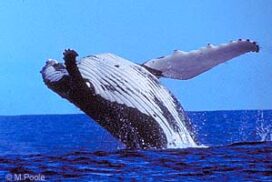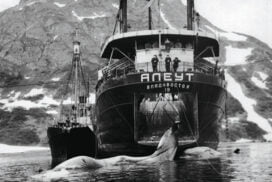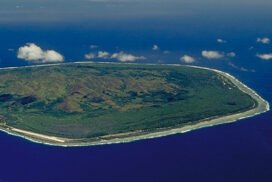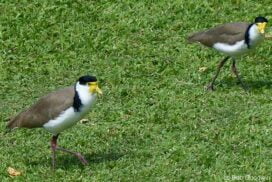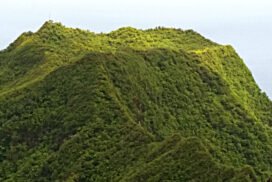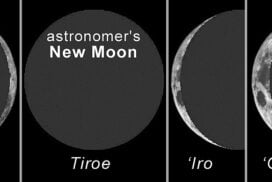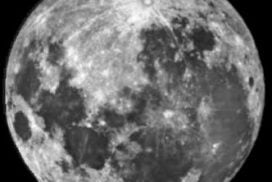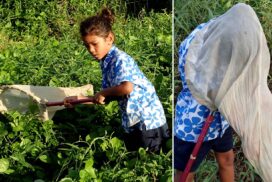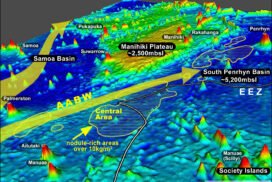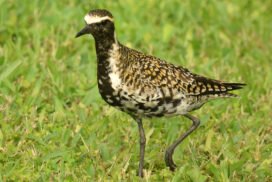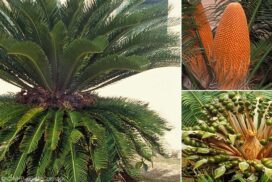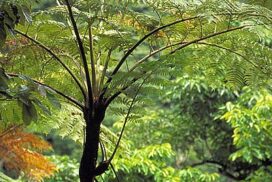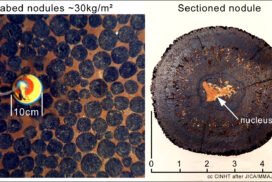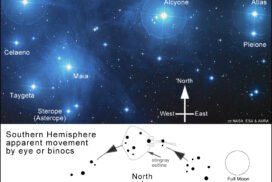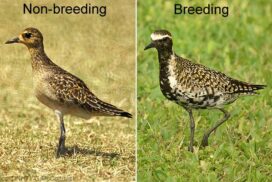 “That isn’t really a pig”09/04/2024Gerald McCormack, CINHT The Cook Islands has a rich tradition of working with spirits. In ancient times all misfortune and ill-health were attributed to spirits who consisted of a plethora of Gods (Atua/Aitu) and the countless souls of deceased people (vaerua tangata). Life revolved around the [Continue reading →]
“That isn’t really a pig”09/04/2024Gerald McCormack, CINHT The Cook Islands has a rich tradition of working with spirits. In ancient times all misfortune and ill-health were attributed to spirits who consisted of a plethora of Gods (Atua/Aitu) and the countless souls of deceased people (vaerua tangata). Life revolved around the [Continue reading →] Cook Islands Humpback Whales – Part 123/02/2024Gerald McCormack, CINHT The dedicated researchers in the South Pacific Whale Research Consortium, including Nan Hauser, have made a large contribution to the recent explosion of information about Humpback Whales. Although science is always a “work in progress” this seems like a good time to review [Continue reading →]
Cook Islands Humpback Whales – Part 123/02/2024Gerald McCormack, CINHT The dedicated researchers in the South Pacific Whale Research Consortium, including Nan Hauser, have made a large contribution to the recent explosion of information about Humpback Whales. Although science is always a “work in progress” this seems like a good time to review [Continue reading →] Cook Islands Humpback Whales – Part 223/02/2024Gerald McCormack, CINHT Soviet illegal whaling The ‘Aluet’ (Aneyt), a Soviet Union factory ship, 1958. Photo by Yulia Ivashchenko.I came to Rarotonga in 1980 and over the next few years periodically saw a humpback or two. At that time Ron Powell and George Cowan told me that humpbacks [Continue reading →]
Cook Islands Humpback Whales – Part 223/02/2024Gerald McCormack, CINHT Soviet illegal whaling The ‘Aluet’ (Aneyt), a Soviet Union factory ship, 1958. Photo by Yulia Ivashchenko.I came to Rarotonga in 1980 and over the next few years periodically saw a humpback or two. At that time Ron Powell and George Cowan told me that humpbacks [Continue reading →] Is Mangaia the oldest island?07/02/2024Gerald McCormack, CIHT In the Quarantine Quiz (CINews 29 May) the oldest island in the Pacific was listed as Mangaia at 18 million years (Ma). This idea gained popularity with the 2010 publication entitled “Tangi ke – Welcome to Mangaia – The oldest island in the Pacific”, by the [Continue reading →]
Is Mangaia the oldest island?07/02/2024Gerald McCormack, CIHT In the Quarantine Quiz (CINews 29 May) the oldest island in the Pacific was listed as Mangaia at 18 million years (Ma). This idea gained popularity with the 2010 publication entitled “Tangi ke – Welcome to Mangaia – The oldest island in the Pacific”, by the [Continue reading →] The spread of the “farmers friend” – the myna23/01/2024Gerald McCormack, CINHT The myna is locally much loathed as a pest, yet it arrived in the early 1900s with such high hopes as the “farmer’s friend”. We follow its triumphant march from India to many countries, including the Cook Islands. The “farmer’s friend” The Common Myna is indigenous to [Continue reading →]
The spread of the “farmers friend” – the myna23/01/2024Gerald McCormack, CINHT The myna is locally much loathed as a pest, yet it arrived in the early 1900s with such high hopes as the “farmer’s friend”. We follow its triumphant march from India to many countries, including the Cook Islands. The “farmer’s friend” The Common Myna is indigenous to [Continue reading →] Black Shouldered Lapwings – a rare vagrant16/01/2024Gerald McCormack, CINHT On the 30th of August, Maureen Goodwin saw two unusual birds on her inland Muri lawn. She Googled and identified them as Australian Southern Lapwings rather than the Northern due to the black ‘ei kakī (collar). Over the next few days, the birds fed, ran over the lawn, and [Continue reading →]
Black Shouldered Lapwings – a rare vagrant16/01/2024Gerald McCormack, CINHT On the 30th of August, Maureen Goodwin saw two unusual birds on her inland Muri lawn. She Googled and identified them as Australian Southern Lapwings rather than the Northern due to the black ‘ei kakī (collar). Over the next few days, the birds fed, ran over the lawn, and [Continue reading →] Te Ko’u summit biodiversity16/01/2024Gerald McCormack, NHT The inland mountains of Rarotonga maintain one of the most pristine tropical forests in the Central South Pacific. The biodiversity crowning glory of the inland forest is in the Cloud Zone, which is recognised by the occurrence of two particular ferns. Depending upon the [Continue reading →]
Te Ko’u summit biodiversity16/01/2024Gerald McCormack, NHT The inland mountains of Rarotonga maintain one of the most pristine tropical forests in the Central South Pacific. The biodiversity crowning glory of the inland forest is in the Cloud Zone, which is recognised by the occurrence of two particular ferns. Depending upon the [Continue reading →] Huntsman spiders -harmless and useful16/01/2024Gerald McCormack, CINHT The largest spiders in the Cook Islands are the two huntsman spiders: the Brown Huntsman (Heteropoda venatoria), and the Noble Huntsman (Heteropoda nobilis). Their long slender legs have a span to about 12cm, although they have relatively small bodies – to 3cm long. [Continue reading →]
Huntsman spiders -harmless and useful16/01/2024Gerald McCormack, CINHT The largest spiders in the Cook Islands are the two huntsman spiders: the Brown Huntsman (Heteropoda venatoria), and the Noble Huntsman (Heteropoda nobilis). Their long slender legs have a span to about 12cm, although they have relatively small bodies – to 3cm long. [Continue reading →] The Arāpō and the Troublesome Moon09/01/2024Gerald McCormack, CINHT. The lunar month calendar of the Cook Islands is the arāpō or “path of the nights”, and the lunar year calendar is the nga tino marama. The 13-month lunar year or annual calendar was difficult to keep synchronised with the seasons. It was abandoned soon after the [Continue reading →]
The Arāpō and the Troublesome Moon09/01/2024Gerald McCormack, CINHT. The lunar month calendar of the Cook Islands is the arāpō or “path of the nights”, and the lunar year calendar is the nga tino marama. The 13-month lunar year or annual calendar was difficult to keep synchronised with the seasons. It was abandoned soon after the [Continue reading →] Cook Islands Arāpō -a comparison09/01/2024Gerald McCormack, CINHT. Lunar calendars are popular in Polynesia as guides for fishing and planting. In most cases they consist of a series of 30 nights with names (named-nights) that are applied without deviation, except for the 30th night, which can be dropped to ensure the next cycle starts on [Continue reading →]
Cook Islands Arāpō -a comparison09/01/2024Gerald McCormack, CINHT. Lunar calendars are popular in Polynesia as guides for fishing and planting. In most cases they consist of a series of 30 nights with names (named-nights) that are applied without deviation, except for the 30th night, which can be dropped to ensure the next cycle starts on [Continue reading →] Keanui’s Biodiversity Bonanza05/06/2021Gerald McCormack, Natural Heritage Trust First published Cook Islands News (5th June 2021), here (6th June 2021) Residents often talk about Cook Islands biodiversity, but few have discovered as many unrecorded species as 6-year-old Keanui Selam. His recent insect-catching expeditions led to the [Continue reading →]
Keanui’s Biodiversity Bonanza05/06/2021Gerald McCormack, Natural Heritage Trust First published Cook Islands News (5th June 2021), here (6th June 2021) Residents often talk about Cook Islands biodiversity, but few have discovered as many unrecorded species as 6-year-old Keanui Selam. His recent insect-catching expeditions led to the [Continue reading →] Will nodule mining destroy our deep sea ecosystem services?19/05/2021Gerald McCormack, Natural Heritage Trust First published Cook Islands News (29 May 2021), updated here (29 May 2021) In an article concerning the possibility of seabed nodule mining in the Cook Islands (Cook Islands News 27 March), Te Ipukarea Society wrote “We are confident that further research [Continue reading →]
Will nodule mining destroy our deep sea ecosystem services?19/05/2021Gerald McCormack, Natural Heritage Trust First published Cook Islands News (29 May 2021), updated here (29 May 2021) In an article concerning the possibility of seabed nodule mining in the Cook Islands (Cook Islands News 27 March), Te Ipukarea Society wrote “We are confident that further research [Continue reading →] Cook Islands Seabed Minerals – the booklet27/04/2021Gerald McCormack, Natural Heritage Trust Booklet published 2016. Available here 28 April 2021 The Trust’s booklet “Cook Islands Seabed Minerals – a precautionary approach to mining” was published in 2016 after three years of research. The booklet provides baseline [Continue reading →]
Cook Islands Seabed Minerals – the booklet27/04/2021Gerald McCormack, Natural Heritage Trust Booklet published 2016. Available here 28 April 2021 The Trust’s booklet “Cook Islands Seabed Minerals – a precautionary approach to mining” was published in 2016 after three years of research. The booklet provides baseline [Continue reading →] We’re away, home again in September14/04/2021Gerald McCormack, Natural Heritage Trust First published (14 April 2021), short version CI News (14 April 2021) The Pacific Golden Plover, or Tōrea, is our most common Alaskan migrant. It is conspicuous on larger grassy areas during the summer and most are now in their dramatic breeding [Continue reading →]
We’re away, home again in September14/04/2021Gerald McCormack, Natural Heritage Trust First published (14 April 2021), short version CI News (14 April 2021) The Pacific Golden Plover, or Tōrea, is our most common Alaskan migrant. It is conspicuous on larger grassy areas during the summer and most are now in their dramatic breeding [Continue reading →] Anonymous TIS criticism misguided23/02/2021Gerald McCormack, Natural Heritage Trust First published CINews (24 Feb. 2021), updated. The following article answers Te Ipukarea Society (TIS) criticisms (CI News 20 February) of the author’s article on the possible impacts of seabed mining on nodule-associated benthic megafauna (CI News 11 [Continue reading →]
Anonymous TIS criticism misguided23/02/2021Gerald McCormack, Natural Heritage Trust First published CINews (24 Feb. 2021), updated. The following article answers Te Ipukarea Society (TIS) criticisms (CI News 20 February) of the author’s article on the possible impacts of seabed mining on nodule-associated benthic megafauna (CI News 11 [Continue reading →] Cycads and their Golden Age19/02/2021Joseph Brider, Natural Heritage Trust. First published online (19 Feb 2021). What do Japanese Sago-palms, Queen Sago-palms and Cardboard Palms all have in common? Well… they are NOT palms, they are all Cycads! The ‘palm’ reference comes from the shape of their leaves and [Continue reading →]
Cycads and their Golden Age19/02/2021Joseph Brider, Natural Heritage Trust. First published online (19 Feb 2021). What do Japanese Sago-palms, Queen Sago-palms and Cardboard Palms all have in common? Well… they are NOT palms, they are all Cycads! The ‘palm’ reference comes from the shape of their leaves and [Continue reading →] Nodule mining impact on benthic megafauna17/02/2021Gerald McCormack, Natural Heritage Trust First published CI News 11 Feb. 2021, last update 23 Mar. 2021. This article discusses the likely impact of nodule mining on the megafauna associated with nodules in the South Penrhyn Basin (SPB), from Penrhyn southward to Aitutaki and Palmerston. This [Continue reading →]
Nodule mining impact on benthic megafauna17/02/2021Gerald McCormack, Natural Heritage Trust First published CI News 11 Feb. 2021, last update 23 Mar. 2021. This article discusses the likely impact of nodule mining on the megafauna associated with nodules in the South Penrhyn Basin (SPB), from Penrhyn southward to Aitutaki and Palmerston. This [Continue reading →] Tree-ferns – Our Living Fossils16/02/2021Joseph Brider, Natural Heritage Trust. First published online (16 Feb 2021). Scattered throughout the Rarotonga inland forest are our Tree-ferns, known locally as Panga. These plants are not trees, they are ferns which have evolved a trunk-like stem to lift their leaves up off the forest floor in [Continue reading →]
Tree-ferns – Our Living Fossils16/02/2021Joseph Brider, Natural Heritage Trust. First published online (16 Feb 2021). Scattered throughout the Rarotonga inland forest are our Tree-ferns, known locally as Panga. These plants are not trees, they are ferns which have evolved a trunk-like stem to lift their leaves up off the forest floor in [Continue reading →] Will Seabed Mining Increase Climate Change?10/02/2021Gerald McCormack, Natural Heritage Trust First published CI News 26 Sept. 2019, modified 10 Feb. 2021. In July 2019, the Greenpeace report “In Deep Water” warned: “By impacting on natural processes that store carbon, deep sea mining could even make climate change worse by releasing carbon stored in [Continue reading →]
Will Seabed Mining Increase Climate Change?10/02/2021Gerald McCormack, Natural Heritage Trust First published CI News 26 Sept. 2019, modified 10 Feb. 2021. In July 2019, the Greenpeace report “In Deep Water” warned: “By impacting on natural processes that store carbon, deep sea mining could even make climate change worse by releasing carbon stored in [Continue reading →] Matariki Dusk Rising 14th November10/02/2021Gerald McCormack, Natural Heritage Trust First published CI News 14 November 2020, updated The Matariki or Pleiades is a cluster of several hundred stars. To the naked-eye the nine brightest stars form a distinctive, eye-catching group with a glowing background, a bit larger than a Full Moon. [Continue reading →]
Matariki Dusk Rising 14th November10/02/2021Gerald McCormack, Natural Heritage Trust First published CI News 14 November 2020, updated The Matariki or Pleiades is a cluster of several hundred stars. To the naked-eye the nine brightest stars form a distinctive, eye-catching group with a glowing background, a bit larger than a Full Moon. [Continue reading →] Golden Plover Migration to Alaska12/01/2021Gerald McCormack, Natural Heritage Trust Holidaymakers gather in the airport departure lounge to leave for home, and as the boarding time approaches they hear entertainer Jake Numanga announce somewhat solemnly “Well, it’s time to go”. During February and March, Golden Plovers or [Continue reading →]
Golden Plover Migration to Alaska12/01/2021Gerald McCormack, Natural Heritage Trust Holidaymakers gather in the airport departure lounge to leave for home, and as the boarding time approaches they hear entertainer Jake Numanga announce somewhat solemnly “Well, it’s time to go”. During February and March, Golden Plovers or [Continue reading →] Raemaru Biodiversity Expedition06/01/2021Gerald McCormack, CINHT 06 Jan. 2021 The invertebrate biodiversity expedition on Raemaru encountered three unique Rarotonga insects, one undescribed, and of the seven locally-unrecorded species, only one was able to be identified. In December, Maja Poeschko and Kirby Morejohn joined the author and [Continue reading →]
Raemaru Biodiversity Expedition06/01/2021Gerald McCormack, CINHT 06 Jan. 2021 The invertebrate biodiversity expedition on Raemaru encountered three unique Rarotonga insects, one undescribed, and of the seven locally-unrecorded species, only one was able to be identified. In December, Maja Poeschko and Kirby Morejohn joined the author and [Continue reading →] Walking on water – taking it in their stride06/01/2021Joseph Brider, Natural Heritage Trust First published CI News (19 Sept 2020) The Cook Islands Biodiversity and Ethnobiology Database lists nearly 650 species of insect and it is estimated we have around 1,300 species. We have found about 300 of the unrecorded insects, and are working to find and [Continue reading →]
Walking on water – taking it in their stride06/01/2021Joseph Brider, Natural Heritage Trust First published CI News (19 Sept 2020) The Cook Islands Biodiversity and Ethnobiology Database lists nearly 650 species of insect and it is estimated we have around 1,300 species. We have found about 300 of the unrecorded insects, and are working to find and [Continue reading →]










